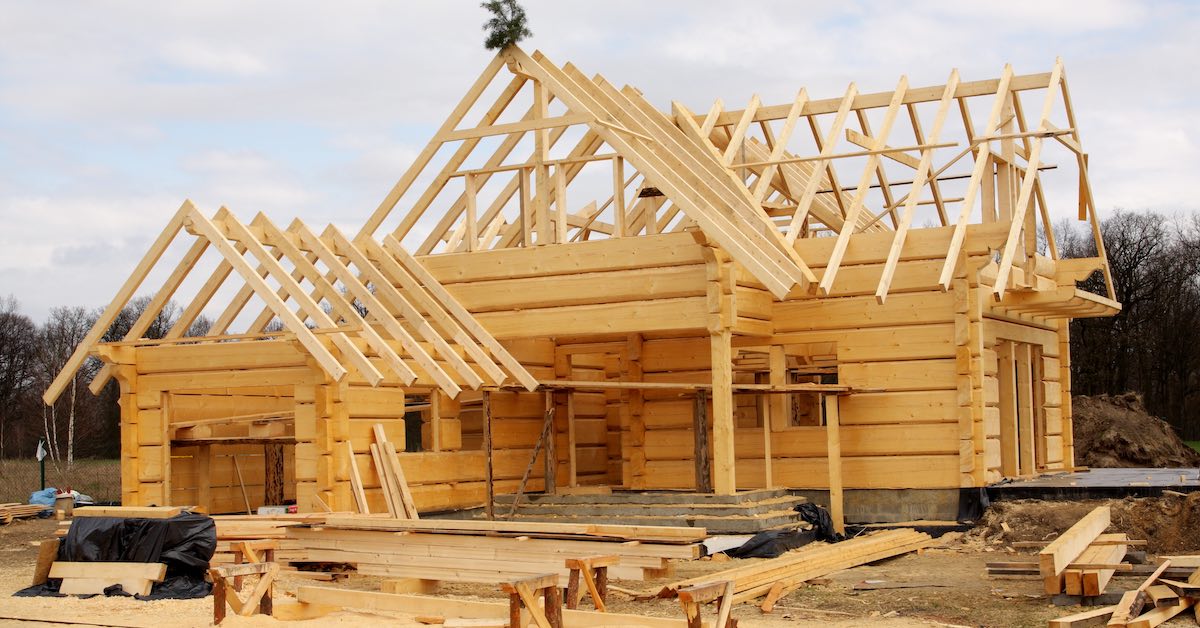Reconstruction Costs and Your Homeowners Insurance
There are three major trends that might be causing the Reconstruction Cost (RC) of your home to climb.

There are three major trends that might be causing the Reconstruction Cost (RC) of your home to climb.

Nobody likes it when prices rise. And recently, it can seem like the cost of everything is going haywire. One thing that’s definitely getting more expensive? Building a house.
Recently, the cost of materials has climbed significantly, which in turn has also inflated the cost of construction labor. Total reconstruction costs, including materials and retail labor, rose 16.7% at the national level in the United States from July 2020 to July 2021, reports Verisk, a data analytics and risk assessment firm.
You probably realize that your homeowners insurance premium may go up over time. This can happen for various reasons—like a recent history of filed claims, or a change to pricing models in your state.
One of the factors involved in those pricing models happens to be reconstruction costs (RC). Reconstruction costs refer to the estimated amount it would cost to rebuild your home from scratch, were it to be destroyed in a catastrophic scenario.
You set a certain amount of what’s known as Dwelling Coverage (aka ‘Coverage A’) when you signed up for homeowners insurance. In general, you’d want to have sufficient coverage to match what it would cost to reconstruct your home.
For example, say you have $300,000 of Coverage A. Your home is destroyed by a covered peril, like a wildfire, and it costs $290,000 to reconstruct it. In this scenario, you’re in good shape, all things considered. But if the reconstruction cost for your house suddenly soared to $350,000? Well, you’d end up having to cover the difference ($50,000) out of pocket.
The economy is a complicated beast, with a million moving parts. But, at the risk of oversimplificsation, there are three major reasons why the current reconstruction cost for your home may be higher than it was a few years ago. Let’s dive in.
Change in labor rates
Rates paid to construction workers are increasing. “Combined hourly retail labor rates increased 4.1% from July 2020 to July 2021, up slightly from the 3.8% increase recorded from April 2020 to April 2021,” reports Verisk. Labor costs for plumbers increased the most, at 4.9%.
Now, it’s not a bad thing that laborers are commanding higher wages—they work hard, and deserve it!—but it does have the knock-on effect of increasing what it would cost to rebuild your home in the event of a disaster.
Cost of supplies
Simply put, the materials used to rebuild your house are getting more expensive. In particular, lumber—the timber or the wood that likely forms the framework of your home. In Feb 2021, Softwood prices are about 112% higher than they were in February 2020, according to Random Lengths, a leading independent reporter of lumber market prices in North America.
Tariffs & trade wars
A tariff is a tax on imports or exports, typically between two countries. In 2018, the United States government began imposing new, higher tariffs on steel, aluminum, and lumber from a number of countries—China in particular.
These tariffs impact the costs of imported materials; prices can become volatile, and tariffs often lead to shipping and processing delays at ports. In short, it adds a bureaucratic headache on construction companies, and can make the whole process more expensive. Guess what? That all trickles down to you, the consumer.
It’s unlikely that reconstruction costs will suddenly revert to what they may have been a handful of years ago.
How would you know if the reconstruction cost for your own property has increased? Well, every year Lemonade reviews and estimates the RC for your property. If it has increased, we’ll reach out and let you know.
Then you’d want to revisit your Dwelling Coverage (Coverage A) to make sure the amount you have reflects the updated reconstruction costs of your property. Just use the Lemonade app to quickly and easily pull up your policy details—and make any changes you’d like.
A few quick words, because we <3 our lawyers: This post is general in nature, and any statement in it doesn’t alter the terms, conditions, exclusions, or limitations of policies issued by Lemonade, which differ according to your state of residence. You’re encouraged to discuss your specific circumstances with your own professional advisors. The purpose of this post is merely to provide you with info and insights you can use to make such discussions more productive! Naturally, all comments by, or references to, third parties represent their own views, and Lemonade assumes no responsibility for them. Coverage and discounts may not be available in all states.
Please note: Lemonade articles and other editorial content are meant for educational purposes only, and should not be relied upon instead of professional legal, insurance or financial advice. The content of these educational articles does not alter the terms, conditions, exclusions, or limitations of policies issued by Lemonade, which differ according to your state of residence. While we regularly review previously published content to ensure it is accurate and up-to-date, there may be instances in which legal conditions or policy details have changed since publication. Any hypothetical examples used in Lemonade editorial content are purely expositional. Hypothetical examples do not alter or bind Lemonade to any application of your insurance policy to the particular facts and circumstances of any actual claim.